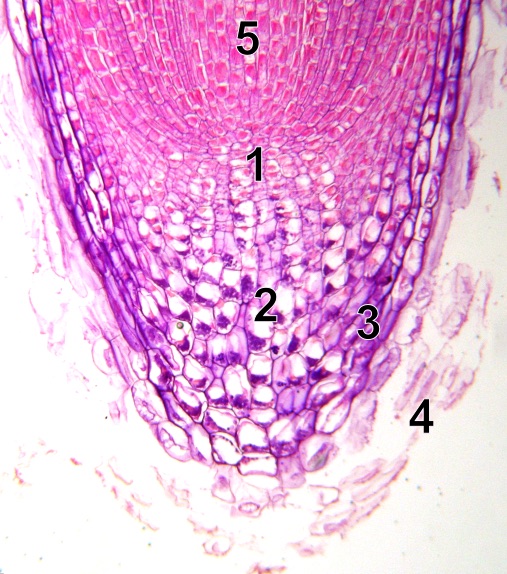
Surrounded by material excreted (exudate) by their own root border cells, the growing root tips (apical region) of plants move through soil regions where important biological interactions occur with a community of soil microbes. This exudate not only helps define the soil microbiome (microbial community), but also changes the physical and chemical characteristics of rhizosphere soil.

Hiltpold et al (2011) provided evidence of systemic, volatile signals in maize roots in response to herbivore attack. From 2013 research on Arabidopsis suggests that soil microbes can alter plant leaf chemistry to inhibit insect feeding. They posited a role for microbial-derived volatile organic compounds acting as a deterrence signal, and noted the presence of Actinobacteria, Firmicutes and Proteobacteria in soil and within Arabidopsis root tissue.In a 2013 Tansley Review, Turnbull and Lopez-Cobello noted that despite localized cellular communication found in the root apical meristem, communication via vascular transport to the rest of the plant did not seem to occur. That left me wondering how plant roots communicated changes throughout the entire plant (systemic).
Those microbes are often associated with “soil odors”. On a sensorial level, “smelling” the earth may help us appreciate the complex, unseen communication happening under foot.